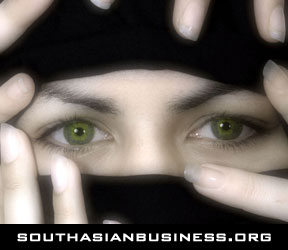
| HOME | EXPORT & IMPORT |TEXTILE ACTS | RESOURCES | DIRECTORY |SITE MAP |
A supplemental distribution channel?: The case of U.S. parallel export channels
Since the mid-1980s there has been a growing interest in the international business literature in so-called "gray markets" or what is referred to by some as parallel markets. Gray market goods are products that enter a market in ways not intended by the original manufacturer (Czinkota, Rivoli, and Ronkainen, 1992). Gray market goods are differentiated from black market products because the former often enter the market legally but outside the control of the regular, authorized distribution channels (Czinkota et al., 1992). In effect, a second, or parallel distribution channel, is formed that exists alongside the authorized one set up by the manufacturer, resulting in intra-brand competition. The bulk of attention to gray marketing has been directed at the U.S. market, where gray market sales have been estimated as high as $10 billion annually (A red-letter date, 1988). There is a growing literature on parallel import activities in the American market (see Weigand,1991; Cavusgil and Sikora, 1988), but virtually nothing from the perspective of American exporters who find their goods being exported through unauthorized channels (notable exceptions are Weigand, 1989 and Kalfayan, 1978). This is an unfortunate gap in the literature because U.S. exporters face various foreign legal systems and environments that impact their distribution policies in ways not found in the parallel trade in the U.S. By focusing mostly on the U.S. market, unique problems, opportunities, and distribution policy concerns of the U.S. exporter related to parallel channels have been ignored. A convenience sample was drawn consisting of executives who had participated in an executive development seminar on international marketing. Interviews of 27 middle- and seniorlevel executives were conducted from consumer nondurable ( 14 firms), consumer-durable (6 firms), and industrial-goods companies (7 firms). Industries included: tobacco, pharmaceuticals, food, garment, household appliances such washing machines and refrigerators, medical supplies, hand tools, electrical, publishing, and liquor. Nearly 50 percent of the executives interviewed were from divisions of Fortune-SOO organizations, and every company had export sales of at least one million dollars. Export sales as a percentage of total sales averaged over ten percent. In most cases, the interviews were conducted by telephone, while a few were done face-to-face. Mostly open-ended questions were used to facilitate data collection for this exploratory study. No interview was terminated prematurely and the average length was nearly 45 minutes. Respondents found the subject quite interesting and often provided elaborate answers to the questions. Questions focused around five general areas: 1 ) Executive attitudes toward parallel exports of their products. 2) How their products were sourced for parallel export channel. 3) Factors causing parallel export channels to form. 4) Problems and opportunities created by parallel export channels. 5) Commonly used strategies to reduce the occurrence of parallel exports. LEGAL IMPLICATIONS Major case law dealing with parallel export channels from the United States was the Todhunter-Mitchell & Co., Ltd v. AnheuserBusch Inc. (1974). The Anheuser-Busch Company, the well-known brewer, appointed Bahama Blenders, Ltd. as its exclusive distributor in the Bahamas. Todhunter-Mitchell, a competitor of Bahama Blenders, and based in the Bahamas, purchased supplies of Budweiser beer from Busch's distributors in New Orleans and Miami. A parallel export channel was formed along side the one set up by Busch. Bahama Blenders complained to Busch that beer was entering the market from an unauthorized or parallel distribution channel established by domestic beer distributors in New Orleans and Miami. Busch exerted pressure on these U.S. distributors to cease shipments to TodhunterMitchell. Todhunter-Mitchell then sued Busch in the United States under the Sherman Act for lost profits. Busch argued unsuccessfully that its action against the plaintiff was "motivated by legitimate marketing considerations relating to quality control and potential oversupply of the product and not for any anti-competitive motive..." (Todhunter-Mitchell v. AnheuserBusch, 1974). The court ruled in favor of the plaintiff because the territorial restrictions imposed by Busch upon the Miami and New Orleans distributors directly affected the flow of commerce out of the United States. The court made it clear that U.S. imports and exports were subject to the provisions of the Sherman Act. The Anheuser-Busch ruling could have a chilling effect on export distribution policies of major U.S. manufacturers. While manufacturers can appoint exclusive foreign distributors, larger firms may have no legal recourse to protect their agreements against parallel exporters. Some experts maintain, however, that a manufacturer can safely cut off a domestic intermediary whose foreign sales violate the manufacturer's exclusive foreign agreement. A manufacturer can unilaterally refuse to deal with any buyer, since a refusal is not in restraint of trade (Townsend, 1980). Such action, however, would not have been much help to AnheuserBusch since the domestic intermediaries who were exporting were also major domestic distributors. If the U.S. intermediaries were strictly export trading companies, with no domestic trade on behalf of the manufacturer, then Anheuser-Busch and other large concerns can refuse to deal with them. Smaller manufacturers have greater flexibility enforcing their exclusive foreign distributorship agreements since their effects on domestic commerce is minimal. By way of contrast, manufacturers in the United States have more legal means to combat parallel imports of their products into the United States than they do with parallel exports. The 1988 U.S. Supreme Court ruling does block the entry of some parallel imports into the United States. Parallel imports "from foreign producers, who are licensed by, but unrelated to the U.S. company could be blocked" (Gray marketing war, 1988). However, only about 5-10 percent of parallel imports are moved into the United States by this channel, and so the overall parallel trade business will not be gravely affected (Marketing News, 1988). Also, cases where an American company registers the foreigner's mark and acts as an authorized licensee, and in effect becomes the legal trademark owner in the United States, and pays royalties to the owner, can block parallel imports (Weigand, 1991). In all other cases, control of trademarks by their owners are exhausted once ownership of trademark goods change hands (Weigand, 1991; Duhan & Sheffet, 1988). If the parallel exporter was a U.S.-based export management company (EMC), then it could easily secure products from U.S. domestic distributors (see Pattern 1). One EMC proudly announced in a trade journal its ability to buy whatever products foreign customers requested (Ferrara, 1985). Domestic distributors freely sell to EMCs as they would to any other wholesalers or retailers. This method for sourcing products PATTERNS OF PARALLEL EXPORTS Results from the study indicated that parallel traders have a variety of ways to source products, thereby making it difficult for export manufacturers to exercise control over the resale of their products in the international markets. for parallel export channels was mentioned by 67 percent of the firms sampled. |
Copyright 2026 Southasianbusiness.org All rights reserved.
|

 Much
has been written on gray marketing or parallel marketing channels
in the U.S. but little has been done on parallel channels of U.S.
exports. An exploratory survey was done of international marketing
executives to learn of their experiences with the formation of parallel
channels of their products. This study identified how parallel traders
sourced their products and what factors led to the formation of
parallel channels. Comparisons were made between U.S. parallel export
channels from U.S. parallel import channels. While grave problems
occur with parallel channels, evidence was presented that suggested
that parallel channels can provide export marketers with benefits
not found in authorized channels. In this respect, parallel channels
can be viewed as a supplemental distribution channel. Policy considerations
for U.S. exporters were provided as well as areas for future research.
Much
has been written on gray marketing or parallel marketing channels
in the U.S. but little has been done on parallel channels of U.S.
exports. An exploratory survey was done of international marketing
executives to learn of their experiences with the formation of parallel
channels of their products. This study identified how parallel traders
sourced their products and what factors led to the formation of
parallel channels. Comparisons were made between U.S. parallel export
channels from U.S. parallel import channels. While grave problems
occur with parallel channels, evidence was presented that suggested
that parallel channels can provide export marketers with benefits
not found in authorized channels. In this respect, parallel channels
can be viewed as a supplemental distribution channel. Policy considerations
for U.S. exporters were provided as well as areas for future research.